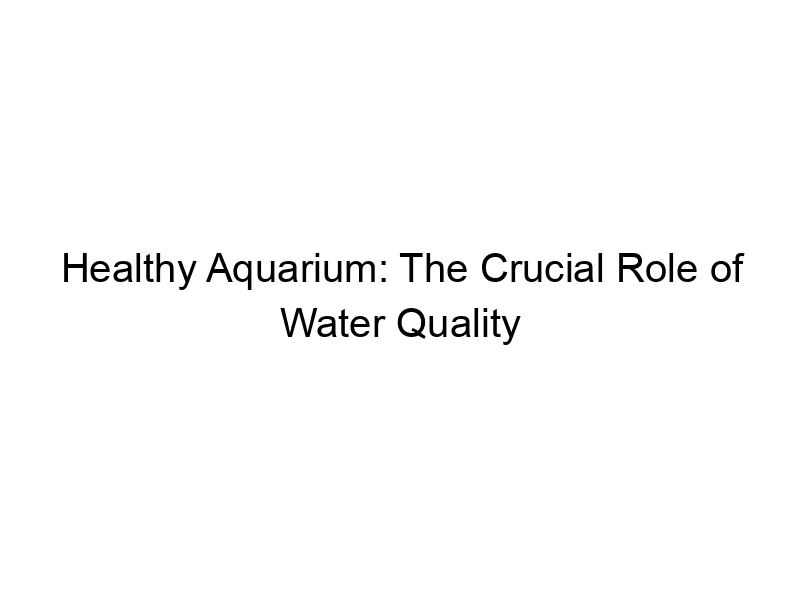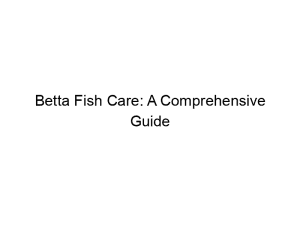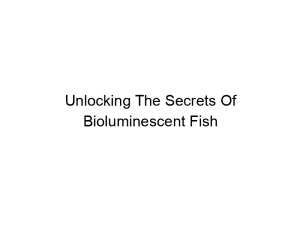Imagine a vibrant underwater world teeming with life, a miniature ecosystem thriving in your home. This is the beauty and joy of keeping fish. But maintaining this delicate balance requires understanding a crucial element: The Importance of Water Quality in Fish Tanks. This comprehensive guide will walk you through everything you need to know about maintaining pristine water conditions, from understanding the basic parameters to advanced techniques. We’ll cover essential water chemistry, common problems, and solutions, empowering you to provide the best possible environment for your aquatic companions. Get ready to become a water quality expert and create a thriving underwater paradise!
pH measures the acidity or alkalinity of water. The ideal pH range for most freshwater fish is between 6.5 and 7.5.
A pH that’s too high or too low can stress your fish, affecting their immune systems and making them susceptible to disease. Regular testing with a reliable liquid test kit or electronic meter is crucial.
Ammonia, Nitrite, and Nitrate: The Nitrogen Cycle
The nitrogen cycle is the cornerstone of a healthy aquarium. Ammonia (NH3) is toxic to fish, produced from fish waste and uneaten food. Beneficial bacteria convert ammonia into nitrite (NO2), which is also toxic. More bacteria then convert nitrite into nitrate (NO3), a much less harmful substance that can be removed through water changes. Understanding this cycle is paramount for successful fish keeping.
Water Hardness: Minerals in Your Water
Water hardness refers to the concentration of minerals like calcium and magnesium. Different fish species have different preferences for water hardness. Soft water (low mineral content) is often preferred by some species, while others thrive in harder water. Using a water hardness test kit will help you determine your water’s hardness.
Testing Your Water Quality
Choosing the Right Test Kit
Accurate water testing is essential. Liquid test kits provide detailed results and are relatively inexpensive. Electronic test kits offer quick readings but can be more costly. Choose a test kit that covers pH, ammonia, nitrite, and nitrate.
Interpreting Test Results
Understanding the numbers you get from your water tests is crucial. High levels of ammonia or nitrite indicate a problem with the nitrogen cycle. An abnormal pH may require adjustments. Regular testing allows you to address issues proactively.
Frequency of Testing
How often you test depends on various factors, including the size of your tank, the number of fish, and the type of filtration. For new tanks, daily testing is recommended during the cycling process. Once established, testing weekly or bi-weekly is generally sufficient.
Maintaining Optimal Water Quality
Water Changes: The Key to Cleanliness
Regular water changes are essential for removing accumulated waste and maintaining stable water parameters. A partial water change of 25-50% weekly is generally recommended. Use a gravel vacuum to remove debris from the substrate.
Filtration: The Heart of Your Aquarium
A robust filtration system is crucial for removing waste and maintaining water clarity. Different types of filters exist (hang-on-back, canister, sump), each with its advantages and disadvantages. Choose a filter appropriate for your tank size and stocking level. Regular filter maintenance (cleaning or replacing media) is critical.
Aeration: Oxygenating Your Aquarium
Adequate oxygen levels are vital for fish health. An air pump and airstone will increase oxygen levels, especially in densely planted or heavily stocked tanks. Observe your fish for signs of oxygen deficiency (rapid gill movement, gasping at the surface).
Understanding Common Water Quality Issues
Ammonia Spikes: A Dangerous Situation
Ammonia spikes occur when the nitrogen cycle is not established or is disrupted. This is highly toxic to fish. Immediate action is required, including large water changes and possibly adding a beneficial bacteria product.
Nitrite Poisoning: Another Serious Threat
Similar to ammonia, nitrite is toxic to fish. Regular testing and addressing issues promptly is vital. Water changes and a functioning nitrogen cycle will help alleviate nitrite problems.
pH Imbalances: Effects on Fish Health
Extremes in pH can stress fish and lead to various health issues. Slow adjustments using pH buffers are typically recommended over sudden changes. Knowing your fish’s preferred pH range is vital.
Advanced Water Quality Management Techniques
Reverse Osmosis (RO) Water: Purifying Your Water
RO systems remove almost all impurities from tap water, providing a clean base for your aquarium water. This is particularly useful for areas with hard or chlorinated water.
Water Conditioners: Neutralizing Harmful Substances
Water conditioners neutralize chlorine and chloramine, often found in tap water, making it safe for fish. They can also help buffer pH and improve water quality.
Substrate Selection: The Importance of Bottom Material
Different substrates impact water quality. Some can contribute to excess nutrients, while others can provide beneficial bacteria colonies. Choosing the right substrate is essential for balanced water parameters.
The Impact of Overstocking
Consequences of Too Many Fish
Overstocking leads to increased waste production, which overwhelms the filtration system and raises ammonia and nitrite levels. This results in poor water quality and stressed, unhealthy fish.
Signs of Overstocking
Observe your fish for signs of stress (lethargy, loss of appetite, rapid gill movement). Cloudy water, high ammonia/nitrite levels, and excessive algae growth also indicate possible overstocking.
Remediating Overstocking Issues
If your tank is overstocked, you’ll need to reduce the number of fish, increase water changes, and enhance filtration. A larger tank might be necessary.
Plant Life and Water Quality
Beneficial Roles of Aquatic Plants
Live plants absorb nutrients, reducing the buildup of nitrates and improving water quality. They also provide shelter and enrichment for your fish.
Plant Selection and Maintenance
Choose plants suitable for your tank’s lighting, substrate, and water parameters. Regular maintenance (pruning, removing dead leaves) is essential to keep plants healthy.
The Impact of Overgrown Plants
While plants are beneficial, excessive growth can lead to oxygen depletion at night, requiring increased aeration.
Aquarium Maintenance Schedule
A Regular Routine for Optimal Health
Establish a routine for water changes, filter maintenance, and testing. Consistency is key to maintaining stable water quality and a healthy aquarium.
Creating a Personalized Maintenance Plan
Tailor your maintenance schedule to the specific needs of your tank and its inhabitants. Larger tanks require less frequent water changes, but more thorough cleaning.
Troubleshooting Common Issues
Maintain a log of your water test results and any maintenance activities. This helps track changes and troubleshoot problems quickly.
Choosing the Right Fish for Your Tank
Understanding Fish Compatibility
Select fish that are compatible in terms of size, temperament, and water parameter preferences. Researching your fish thoroughly before purchase is essential.
Stocking Levels: Avoiding Overcrowding
Follow appropriate stocking guidelines based on your tank size and the fish species you choose. Avoid overcrowding to prevent water quality issues.
Introducing New Fish Gradually
Acclimate new fish slowly to your tank’s water parameters to minimize stress and prevent disease.
Preventive Measures for Maintaining Water Quality
Regular Observation: Early Detection
Regularly monitor your fish for any signs of illness or stress. Early detection is crucial for effective treatment.
Quarantine New Fish: Avoiding Diseases
Always quarantine new fish in a separate tank before introducing them to your main aquarium to prevent the spread of diseases.
Cleanliness is Key: Preventing Contamination
Keep the area around your tank clean to prevent the introduction of contaminants into the aquarium.
The Role of Technology in Water Quality Monitoring
Automated Monitoring Systems
Advanced systems automatically monitor and adjust water parameters, ensuring optimal conditions for your fish.
Smart Aquarium Technology
Connected aquarium devices provide real-time data and alerts, enabling proactive management of water quality.
Benefits and Limitations of Automated Systems
While convenient, automated systems can be expensive and require regular maintenance. They provide peace of mind, but manual monitoring is still essential.
Advanced Filtration Techniques
Beyond Standard Filtration
Explore advanced filtration methods such as protein skimmers (for saltwater tanks), UV sterilizers (for disease control), and specialized media (for specific nutrient removal).
Choosing the Right Filtration System
Consider your tank size, stocking level, and the type of fish you keep when selecting a filtration system. Over-filtration is better than under-filtration.
Maintenance of Advanced Filtration Systems
Advanced filtration systems require more maintenance than standard filters, including regular cleaning, media replacement, and occasional component repairs.
Frequently Asked Questions
What are the most common signs of poor water quality in a fish tank?
Cloudy water, unpleasant odors, excessive algae growth, lethargic fish, and fish exhibiting unusual behavior (rapid gill movement, gasping at the surface) are all strong indicators of poor water quality. High readings of ammonia and nitrite during water testing confirm the problem.
How often should I change the water in my fish tank?
The frequency of water changes depends on factors like tank size, stocking density, and filtration. Generally, a 25-50% water change weekly is a good starting point. Smaller tanks may need more frequent changes.
What is the nitrogen cycle, and why is it important?
The nitrogen cycle is the natural process by which beneficial bacteria in your aquarium convert harmful waste products (ammonia and nitrite) into less harmful nitrates. A properly functioning nitrogen cycle is essential for maintaining healthy water quality and preventing fish deaths.
What are the benefits of using live plants in my aquarium?
Live plants help absorb excess nutrients (nitrates), reducing the burden on your filtration system and improving water clarity. They also provide hiding places and enrichment for fish, enhancing their overall well-being.
How do I know if my aquarium is overstocked?
Overstocking leads to rapid waste buildup, overwhelming the filtration system and causing ammonia and nitrite levels to spike. Signs include cloudy water, lethargy in your fish, and unusual behavior.
What should I do if I suspect my fish have been poisoned by ammonia or nitrite?
Immediate action is critical. Perform a large water change (50-75%) using dechlorinated water. Increase aeration and monitor your water parameters closely. Consider adding a beneficial bacteria product to help speed up the nitrogen cycle.
What type of water is best for my fish?
The ideal water parameters depend on the type of fish you keep. Research your fish species to determine their preferred pH, hardness, and temperature. Use a test kit to measure your tap water and adjust accordingly.
Final Thoughts
Maintaining pristine water quality is the cornerstone of successful fishkeeping. Understanding the basics of water chemistry, utilizing appropriate testing methods, and implementing regular maintenance practices are crucial for creating a thriving underwater ecosystem. From the intricacies of the nitrogen cycle to the importance of regular water changes and appropriate filtration, every aspect contributes to the health and well-being of your aquatic companions. Remember that proactive management, regular monitoring, and a thoughtful approach to stocking your aquarium are essential for preventing problems and ensuring a long and healthy life for your fish. Don’t hesitate to invest in high-quality testing equipment and filtration systems—your fish will thank you for it! By diligently following the guidelines outlined in this guide, you can transform your fish tank into a vibrant, healthy, and captivating environment. Start building that underwater paradise today!




